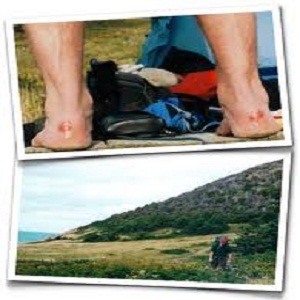How to Deal With a Blister While Hiking

Blisters during hiking are a big turn off and ruin your trip. The problem becomes serious when you are on a long hike and still have a distance to go. Most blisters are caused due to the constant friction of your feet against the shoes. Moisture caused by sweat and hard terrain also increases the likeliness of blister formation. Blisters can cause discomfort and ever increasing pain by increasing the rawness of the skin. After you develop a blister, every step that you take will be an effort. Since you cannot take a break and be at leisure like home, you will have to do with limited options. This certainly does not mean that you give off your hiking plan or continue with the pain.
Instructions
-
1
Remove your feet from the socks and shoes as soon as you feel raw skin and friction. If the area has gone raw, apply an anti-chafe cream to that patch. Now apply foot powder to the area and wear your shoes again so that further damage is prevented. If a blister has already developed, you will have to treat it before you get back to hiking.
-
2
Moleskin is available at drug stores and also at general stores. It is widely used to treat blisters during walking. Use a sharp scissor to cut a circular moleskin patch equal to the size of your blister. Place the moleskin on your blister, in a way that the hole in the center is directly above the blister. This will let it breath and get treated. Put on a fresh pair of socks first before you wear the shoes back. The moleskin prevents contact between the feet and the shoes so that the blister is not irritated and does not cause discomfort.
-
3
An unconventional mode of treatment popular among hikers is super glue. Applying glue to the blister makes it firmly attached to the skin beneath it and forms a protective hard layer over it, preventing it from bursting and causing pain.
-
4
It is important that you avoid further blister formation by taking some preventive measures. Make sure that the shoes you wear fit you snugly because if they are loose, there will greater feet movement and contact, and thus more blisters. Change your socks regularly if they develop sweat because moist conditions promote blisters.







